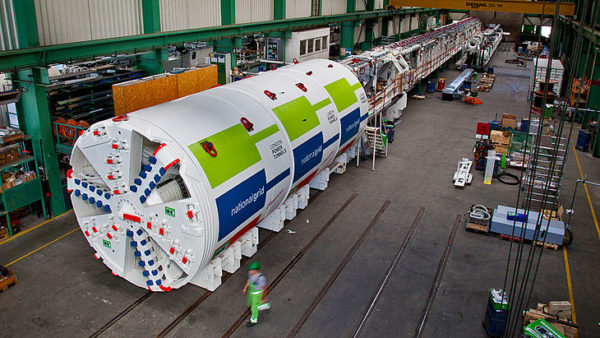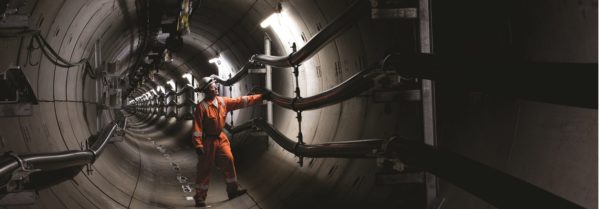A 20-mile tunnel almost as big as a tube tunnel is to be dug under South London, linking Wimbledon to Crayford near Dartford, via New Cross.
This long tunnel will be carrying not humans, but electrons — it’s part of the London Power Tunnels project to upgrade capacity in London for its ongoing electricity demands. The new tunnel will replace a maze of cables running under London’s streets which are wearing out and need replacing, but rather than digging up loads of roads, the National Grid has opted for a deep tunnel instead.
The £400 million construction contract has just been awarded to a consortium of Hochtief and J Murphy and Sons. The tunnel will then be dug in three sections, all starting in March 2020, and completing in late 2024-2026.
Once completed, they will carry up to 400kV of electricity. The project follows on from a similar tunnel construction across north London.
A number of shafts are also needed to be dug down, for access to the electricity tunnels, but mainly for ventilation to keep the cables cool. Most of the headhouses on the surface will be on existing UK Power Networks sites, but one, at Eltham is currently occupied by the Welling and District Model Engineering Society, who will need to find a new home for their miniature railway and meetings.
There is also a suggestion that the ventilation shafts could find a use in the heat they extract, to heat homes or offices. A typical length of electricity tunnel between ventilation shafts produces around 400 kilowatts of heat, enough to heat 100 homes or a small commercial office.
If implemented, then not only could the new tunnels carry electricity to heat homes, they will do so while actually heating homes indirectly as well.










I know it’s Christmas but let’s correct the Physics. All things, particularly metal wires, contain electrons which jiggle around in a random way but never really move very far. Here the cables carry alternating current which makes the electrons even more neurotic moving them backwards and forwards at 50Hz as well. It’s the energy carried moves forward – think pass the parcel…
So basically an electron is as likely to travel all the way from Wimbledon to Crayford as Mr Corbyn is to become PM.
Thanks for doing such an excellent site and I hope you have a Happy Christmas and prosperous New Year.
[p.s. I like the inclusion of the grocer’s apostrophe to test if we’d had too much to drink!]
Yes! AND they won’t carry 400kV of electricity either! 400kV is the voltage used to drive the current, resulting in an energy transfer.
Won’t need so many tunnels if more high rises had solar panels.
It is rather more relevant what power is to be carried rather than the 400kV voltage!
To keep the cables cool the heat has to be removed at a fairly low temperature and whilst this might be used directly for space heating it would require a heat pump to heat water for example.
But for half the year homes do not require heating and the heat from the cable tunnel will need to be vented to the atmosphere.
Maybe they should give the heat to something that needs it constantly such a public swimming pool
Thanks but your knowledge should reflect today’s prices for this not inclusive of the rates applied happy Christmas..
Thanks for the article.
I was curious how deep the tunnel would run, and found the answer here:
http://londonpowertunnels.co.uk/tunnel-route/
(between 10 metres and 63 metres deep).
An actual tube tunnel would have been nice. I had my hopes up for a minute. Wimbledon to Crayford. I’d be home within the hour!
I think the we should apply more of a join up thinking approach for example on these route is it feasible for transport to be used in the tunnel hence for the generations, also we have a NHS service who tend to want to promote exercise so local authority runs community centre with pool and some housing the surplus heat can be used for heating a pool and housing , alternatively developed food growing in underground farming which could be used to aid supplies of food for hospitals school and rest home and shelter at medium to long term costs. We as a nation need to think much more out side the box adapt and over come.
You cant have people routinely down there — it’s dangerous to be routinely that close to power cables carrying that amount of electricity.
Even if it were safe, once you regularly let people into the tunnels, the costs of building it soar, due to the additional shafts, ventilation, safety systems etc.
While it’s not technically impossible to built a multi-use tunnel, the costs are rarely going to justify the benefit.